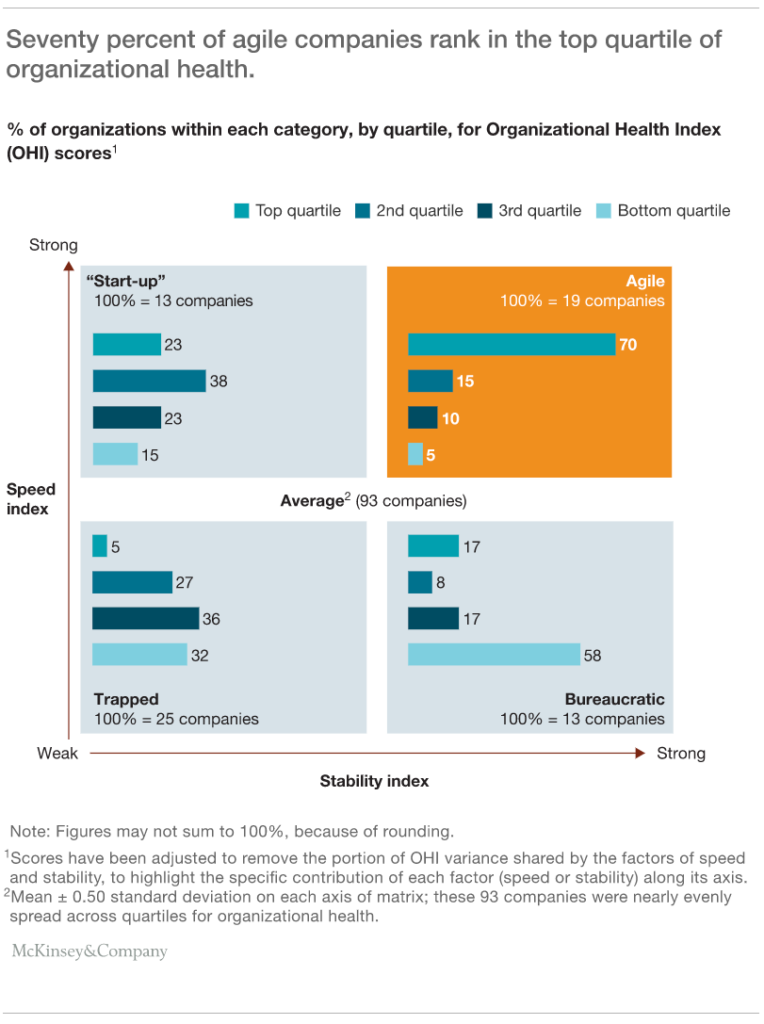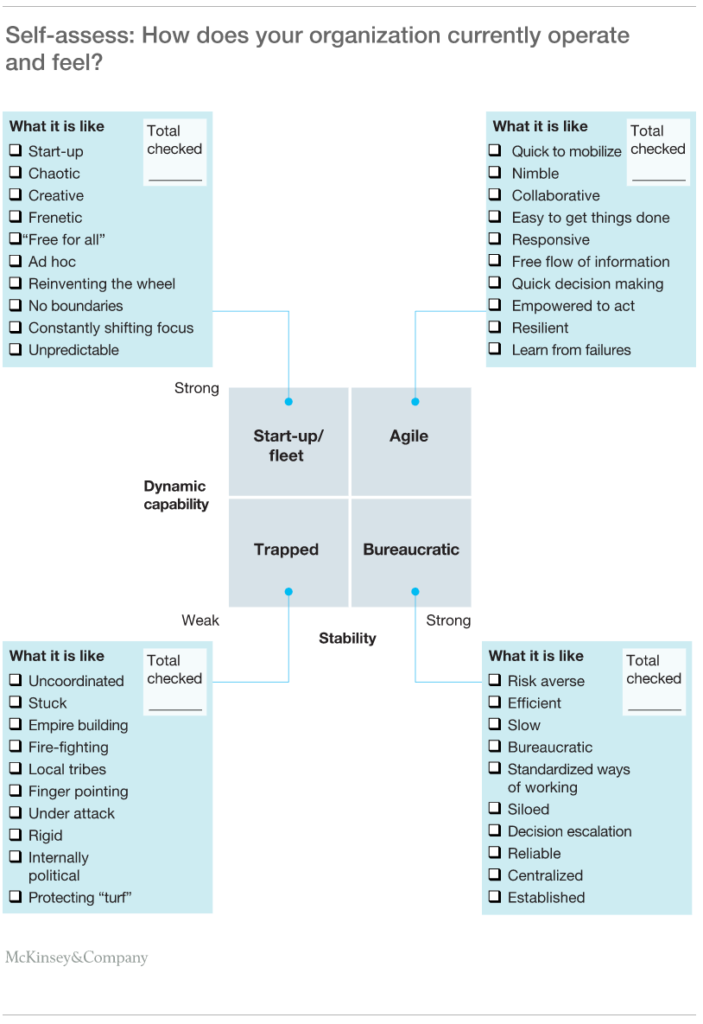Summary
McKinsey & Company released a article discussing how public sector agility can help organizations keep pace with change, including during times of crisis. The paper touches on the transformative times we live in, from the industrial age through to the digital age and the challenges public sector organizations face. It argues that public sector organizations lack the nimbleness and speed to keep pace in a rapidly changing world. It talks about the management paradigm shift that needs to occur – one moving from seeing organizations as ‘machines’ towards more people and human focused. It touches also on lessons from the private sector and how public sector organizations can make the shift with high-level guidance on strategy, structure, process and people.
Key Points
- The paper touches on the transformative times we live in, from the industrial age through to the digital age and the challenges public sector organizations face.
- Organizational agility importance during crises, its benefits and key case studies from successful transformations
- The barriers to change, including:
- Cultural aversion to risk
- Functional silos
- Organizational complexity
- It discusses the importance of mindset shifts required and adoption of contemporary management approaches
- Reflects on lessons from the private sector, including reflecting on the Organizational Health Index developed by McKinsey.
“Just 12 percent of the organizations in our sample were agile, that is, both quick and stable. Intriguingly, these were 70 percent more likely than the others to be in the top quartile for organizational health (Exhibit 2). Bureaucratic organizations—and most public-sector departments and agencies would probably qualify—have by far the poorest organizational health of the three nonagile types.”

- The paper then explores how public sector institutions can become agile beyond times of crisis, including exploring:
- Strategy: “A shared vision and purpose drive agile organizations. Clarity about core strategic differentiators—“how to achieve the mission”—provides their stable backbone. Yet they are dynamic as well: fast reactions to changing circumstances help them to sense and address opportunities or societal needs, to address them quickly by allocating people and resources, and to experiment and iterate rapidly. Most important, teams see how they help to achieve the mission and have clear, fast ways to make trade-offs across the various competing sub-missions.”
- Structure: “Agile organizations set a stable, simple structure as their backbone. The top team comprises the leaders of missions and core functions, who typically decide how to allocate the budget. The dynamic dimension comes from modular teams, which have clear missions and enough autonomy to make decisions. Such teams take end-to-end ownership of processes with clear customers or mission outcomes. Coming in many different sizes, missions, and capabilities, these teams are the organization’s “apps.” The US Marine Corps in particular has used this structure to great effect in the public sector.”
- Process: “Agile organizations keep their operations stable because standardized, minimally specified core (and usually “signature”) processes underpin their work. These are the essential activities they must excel at to accomplish their mission. The dynamic dimension comes from continuous improvement and fluid configurations in the way agile organizations work, employing a wide variety of linkage mechanisms, such as dotted-line reporting, integrator roles, and formalized interactions among disparate functions. These organizations also frequently review their performance on core tasks, their priorities, and the resources they allocate to meet them.”
- People: “But ultimately it is people who accomplish the mission, no matter which structures or processes are in place. People crave stability and find it in the shared values that hold organizations together. If an organization truly embodies these values, they provide a strong common culture and purpose. But people also crave novelty, and organizations can become more dynamic by tapping into that desire. Agile organizations focus on creating a culture of self-improvement and stretch goals in an atmosphere of open, honest feedback. Smaller, more dynamic teams test and refine new ideas together.”
- Finally, the paper reflects on the steps recommended to become agile, including providing a self-assessment checklist.



No responses yet